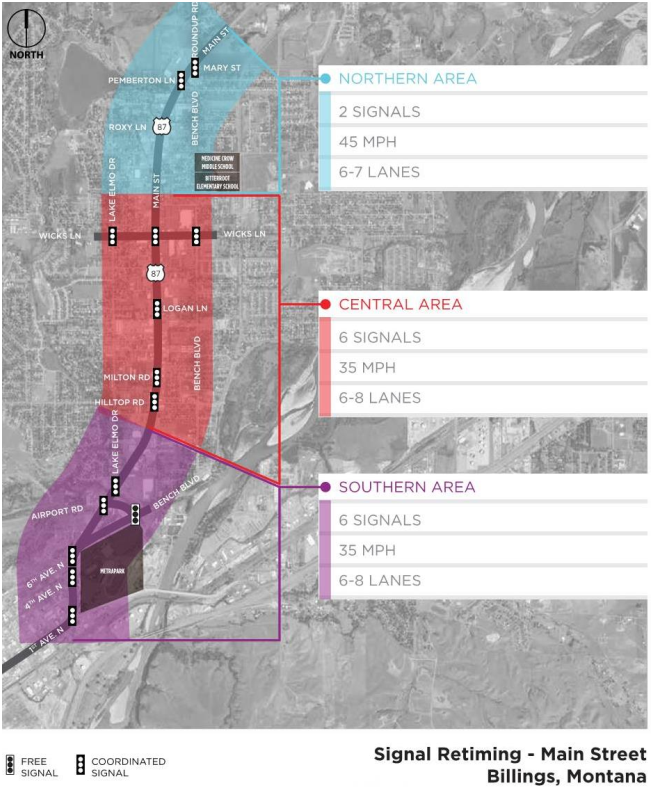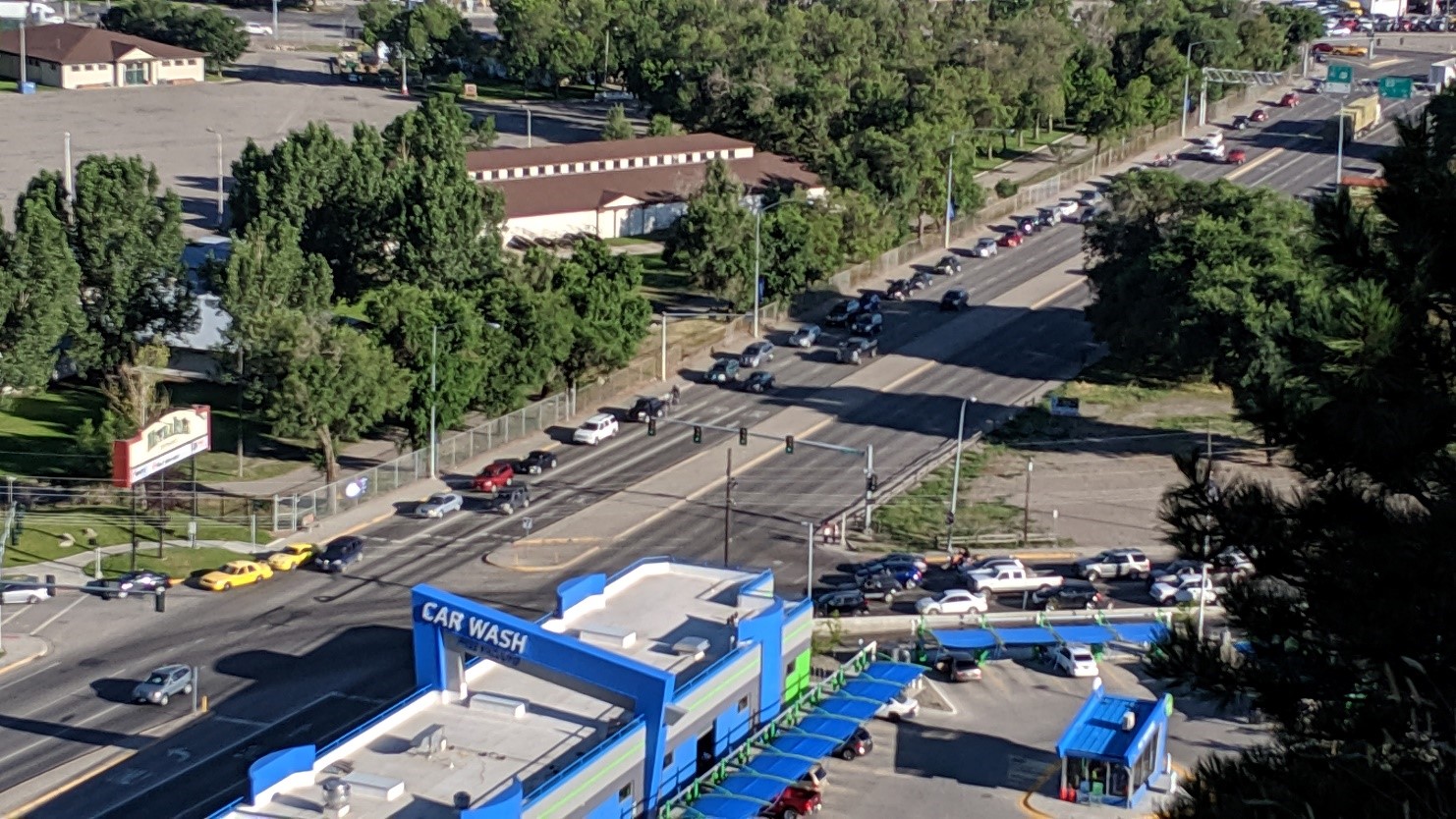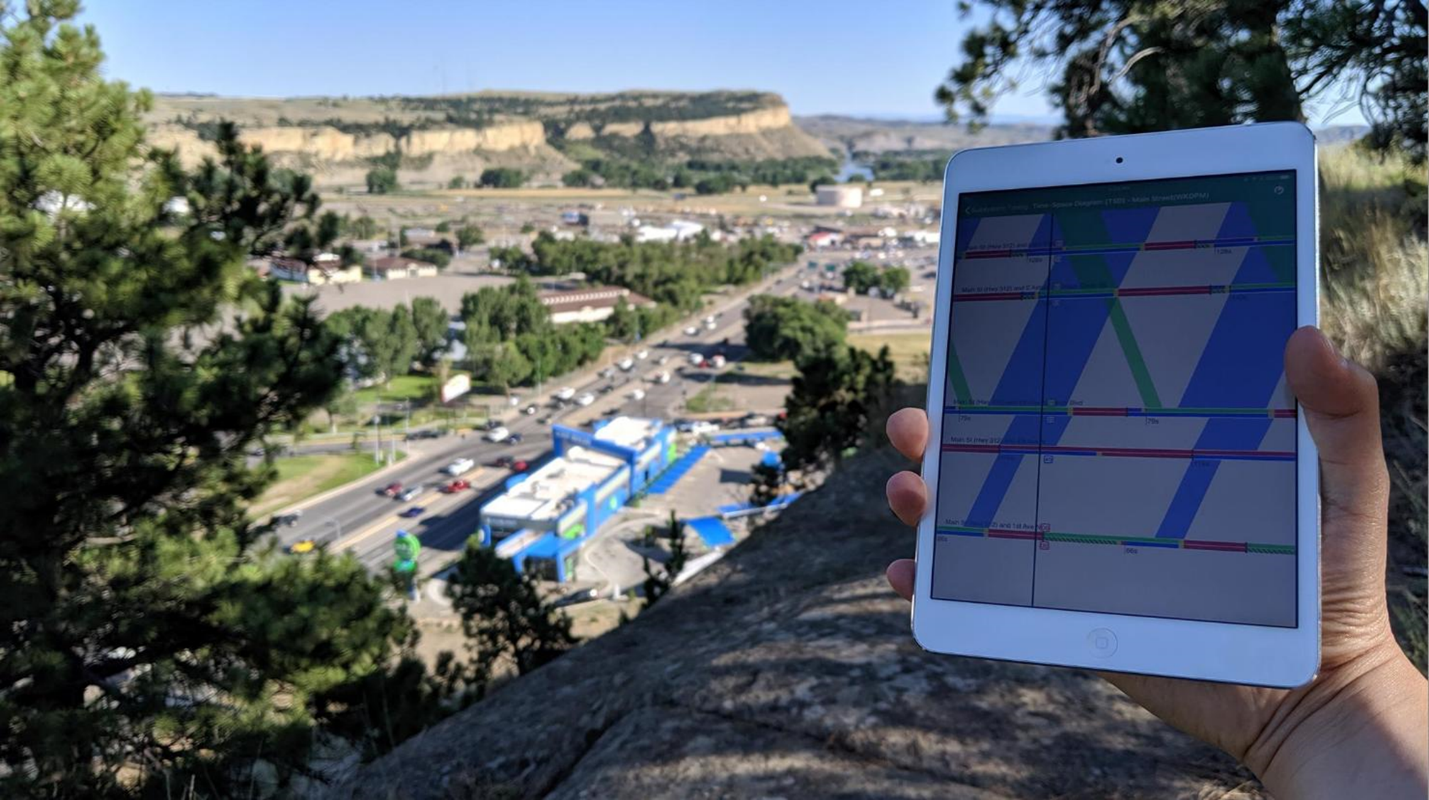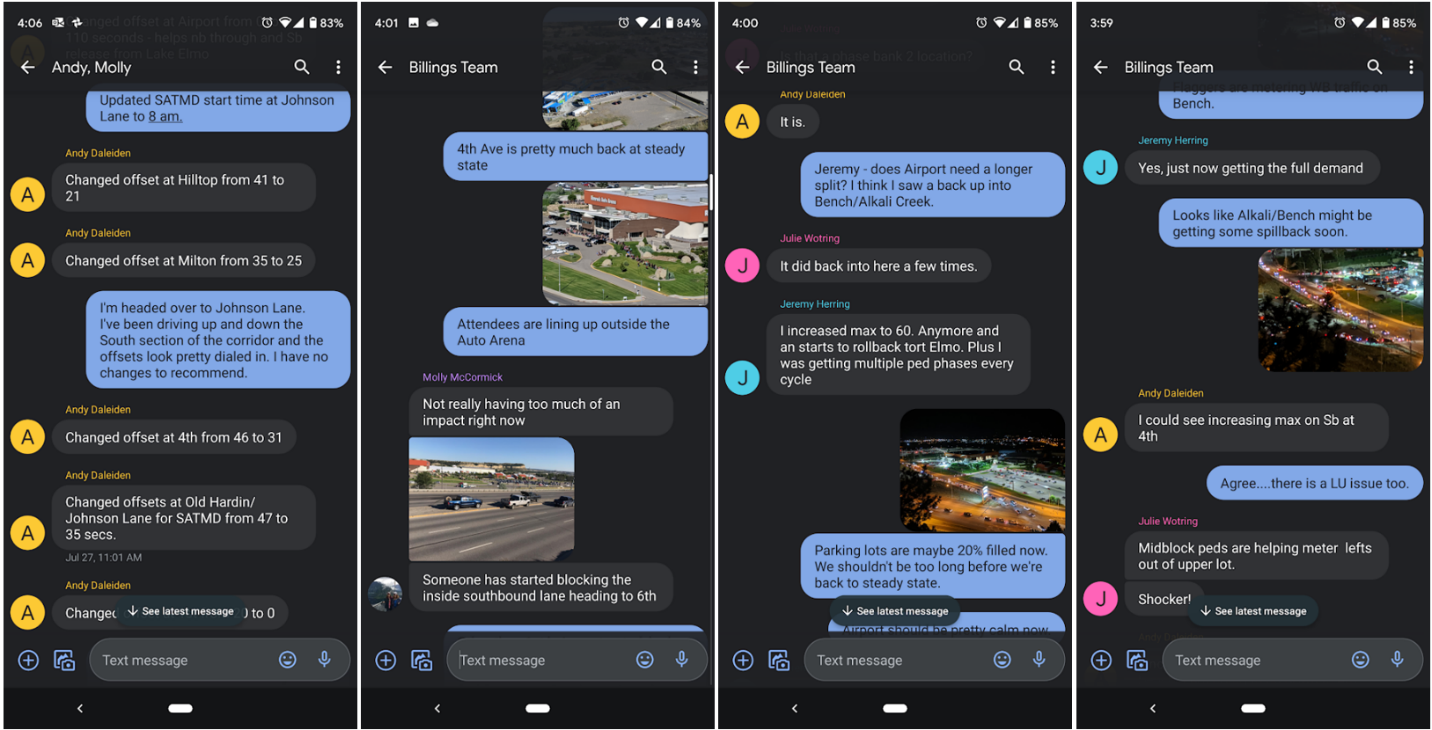September 10, 2020
When we can improve the functionality of a busy corridor and give “Twins of Evil” fans a hassle-free concert experience, we call that a project success.
Through adding four new tools into our signal retiming toolbox, our team was able to improve the roadway user experience on Main Street in Billings, Montana and support Montana Transportation Department (MDT) in successfully managing traffic on one of Main Street’s busiest days of 2019.
Managing Commuter Traffic Along Main Street
 Main Street in Billings, Montana is the major north/south connection, connecting downtown Billings to the northern part of Montana’s largest city and several highways that provide regional connections to/from Billings. With many offices, stores, and restaurants located off Main Street, it sees 31,000 vehicles per day on average, with just under 3,000 vehicles during the peak hour.
Main Street in Billings, Montana is the major north/south connection, connecting downtown Billings to the northern part of Montana’s largest city and several highways that provide regional connections to/from Billings. With many offices, stores, and restaurants located off Main Street, it sees 31,000 vehicles per day on average, with just under 3,000 vehicles during the peak hour.
Different trip characteristics are evident in different sections of the corridor – for example, the southern part of the study area experiences heavy traffic volumes and has tightly spaced intersections, while the northern part has a higher speed limit and fewer intersections.
You still may be wondering: What do the Twins of Evil have to do with signal retiming?
In July 2019, the Kittelson team paid a visit to Billings to monitor and retime the signals along Main Street, and to help MDT manage traffic during the “Twins of Evil: Hell Never Dies” concert put on by Rob Zombie and Marilyn Manson. MetraPark, the city’s main event expo, is located off Main Street.
The outcomes of this effort included upgrading the signal controllers and updating timing plans to improve the user experience. The result was an improvement in percent slowdown at all times of day on the corridor (and approximately 10,000 happy concert fans).
Here are four tools we found particularly useful during our time in Billings.
Drone Footage to Understand Complex Patterns
A bird’s eye view comes in handy when you’re seeking to understand complex circulation patterns.
In order to make real-time adjustments, we needed to know how special event traffic was traveling around the MetraPark facility. Examining drone footage of the facility prior to our visit to Billings helped us clearly identify a clear pattern of empty spots in the north parking lot but an overflowing south parking lot, which was affecting queuing on the main road. This led to a recommendation to add a dynamic sign to instruct drivers to head to the north lot when the south lot was full.

Cars begin to line up for the Twins of Evil: Hell Never Dies concert in Billings, Montana.
Apps That Eliminate Signal Retiming Guesswork
There is an unfortunate amount of guesswork in signal retiming. Even with time/space diagrams in hand, it can be difficult to tell what a controller is doing just by looking at it or driving the corridor, and when making adjustments, it is useful to know more than just the one cycle in front of you.
“There’s an app for that.” TranSync, developed by Trans-Intelligence under guidance of Dr. Zong Tian from the University of Nevada, Reno, proved to be useful for our project. With signal timings loaded into the app and clocks synced with the controllers, we were able understand what the signal indications should be showing at every point in time. This accelerated our troubleshooting, such as identifying controllers that were out of sync due to daylight savings time, and better focus on solutions when fine-tuning.

The TranSync app helped us understand what the signal indications should be showing at every point in time.
Texting: You Can Do It At Work Too
It’s been a long time since texting was considered high tech, but it was useful in our project for many reasons (and it’s a relevant step to consider with social distancing recommendations today).
During the Twins of Evil concert, we had team members posted at different sites to update timings on the fly, but we also needed people with holistic vantage points to monitor traffic at the network level. Our solution was using texting to communicate with one another so that we could make necessary adjustments to improve flow of traffic for concert attendees. Not only did texting give us a reliable method of communication, but our texting threads documented all the changes we made for ease of reporting.

A texting thread kept us all informed, and documented the changes we were making for ease of reporting.
Bluetooth Reveals More Than Travel Time
Transportation engineers often use Bluetooth sensors to collect travel time along a corridor, but the reality is Bluetooth can do so much more, and travel time alone doesn’t tell the whole story. For example, it is the number of stops, not travel time that the driver remembers when traveling along the corridor. So why not measure the quality of signal timing progression?
We used a sensor to picked up Bluetooth Classic, Bluetooth Low Energy (BLE), and Wi-Fi signals at every signalized intersection in the project area, which gave us detailed information about vehicle movements that enabled us to create custom metrics.
In particular, we looked at percent slowdown as a way of measuring quality of progression. Ultimately, the charts showed that percent slowdown improved more than travel time did from our signal retiming, and that’s what made the difference to drivers.

We were also able to use Bluetooth to map the corridor trajectory to confirm our assumptions about where people were traveling on the corridor. Bluetooth data shows us what parts of the corridor were most frequently traveled, so we were able to focus our efforts accordingly.

Expanding Our Signal Retiming Toolbox
“Kittelson always brings some innovative technology that helps us expand our knowledge base and they are truly committed to helping MDT improve our traffic operations,” said Julie Wotring of MDT. “The Main Street implementation was challenging, interesting, and fun!”
Sometimes it’s the simple tools and adjustments to process that make the biggest difference. We’re grateful to MDT for giving us the freedom to try new things in their project that ultimately improved our efficiency and yielded good results.
We’d also love to hear what tools have worked well for you! Feel free to reach out and start an idea exchange – about signal retiming, the Twins of Evil, or anything in between.
